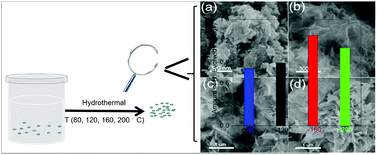Oxygen vacancy modulation of two-dimensional γ-Ga2O3 nanosheets as efficient catalysts for photocatalytic hydrogen evolution†
Abstract
Controlling the creation of oxygen vacancies can effectively regulate the optical and electronic properties of metal oxide nanomaterials. Over the past several decades, numerous metal oxides with oxygen vacancies have been developed. However, an investigation about oxygen vacancies leading to the formation of nanosheets with different thicknesses has not been available up to now. Here, we report the oxygen vacancy modulated formation of γ-Ga2O3 nanosheets and demonstrate that the thickness of the nanosheets is not the decisive factor in the photocatalytic hydrogen evolution reaction of ultrathin 2D nanosheets. Detailed structural characterization indicated that γ-Ga2O3 prepared at 160 °C (γ-160) with a morphology of ultrathin nanosheets possesses the highest oxygen vacancy concentration and an optimal thickness of the nanosheets. The enhanced photocatalytic performance could be determined from the synergistic effects between the ultrathin 2D structure and the O-vacancies confined in the ultrathin nanosheets. This work provides an efficient strategy to regulate the formation of nanosheets at the atomic scale and enrich the study on the effect of oxygen vacancies in the photocatalytic water splitting reaction.



 Please wait while we load your content...
Please wait while we load your content...